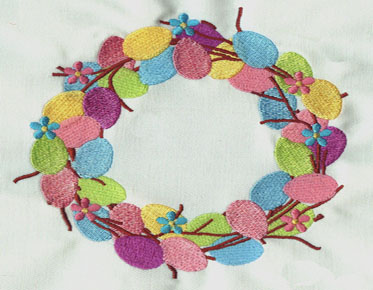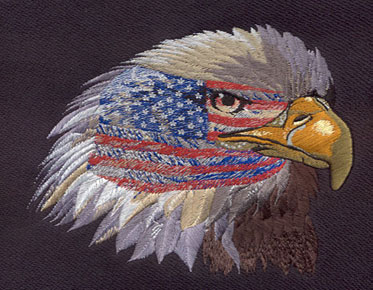The Guide to Embroidery Digitizing
You have just walked into the world of
embroidery digitizing and are
totally clueless. You must be hearing a lot of new terms like embroidery
digitization! And that’s why you’re here.
Are you curious to know how embroidery
works? It doesn't take long before you get engrossed in the topic and start
wishing you too could sew the artwork you want instead of wearing the standard
designs that are usually sold.
After dedicated research, we have come
up with a way to turn images into carefully planned embroidery designs.
The trend and evolution of embroidery digitizing:
As times change rapidly, we find that
the fashion industry is also developing at the same speed. However, one of the
fastest growing trends is the apparel industry. The way people dress,
initially, women only liked florals or solids. Now we find women wearing
various trendy designs. People think that clothes communicate in a completely
different way, which is why digitizing is the best way to meet various
needs.
Embroidery digitization can help
people put their favorite designs on clothing as embroidery rather than printed
images. This makes the complete look of the garment beautiful. The use of
stickers and printed designs makes the design look shabby and bad. Digitization
helps you wear your most glamorous designs at the ultimate level!
With the help of machine embroidery
designs, there has been a wave of popular embroidery designs. You also have to
stay on top of trends and create your fashion statement! There have been
countless innovations in the development of textiles, among which digitization
is one of the greatest replacements for printed artworks. You are now able to
depict your work in a more refined way with a defined presentation! The
digitization of embroidery gave clues to many other ideas such as accessory
embroidery, pastel color palettes, photorealism and minimalism.
This digitization of embroidery will
also affect traditional embroidery methods. The new method has valuable
implications for fabric-like substrates. They also employ advanced techniques
to match colors and produce vibrant and long-lasting patterns. Also, the
stitching is done by machine.
This way, you can be sure that all
stitches are the same and in the same proportions. Traditional methods generate
large amounts of waste. Sometimes the design fails to grip the fabric. All of this
uncertainty is erased with the help of digitization due to incorrect pin
scales!
How quickly has it entered the fashion
industry?
Fashion industry
The fashion industry finds itself
changing fast! This shows that they are now able to communicate with customers
in a better way. The digitization of embroidery has made the fashion industry
more efficient and productive. They can produce valuable results in a short
period of time.
Fashion Clothing Trends:
Fashion apparel will significantly
adopt digital embroidery technology to a greater extent. Over the past decade,
we have seen the digitalization of embroidery into fashion apparel, and it will
explode in 2022.
Promotion and Branding:
The fashion industry can more easily
market and promote their products. This allows the company to maintain the
"brand" status. They can create logos and make them onto clothes in a
better sense. Digitization has been around for a long time, but now it is being
embraced by the industry on a major level.
Competitive Advantage:
Including the ability to digitize
embroidery, anything from apparel to accessories is critical for small
businesses. Companies want to gain a competitive advantage when selling goods
online. These businesses are increasingly adopting embroidery digital services
as they are cheaper and allow them to expand the reach of their brands through
creative marketing efforts.
The steps to be included in the
digitization of machine embroidery digitization:
Step 1: Prepare your embroidery work:
Prepare embroidery work
When digitizing an embroidery design,
it is important to know if a certain design requires a particular kind of
stitch type. Ensuring that the analysis is designed is also the responsibility
of the digitizer. This helps them understand if the design needs any changes
before it can be scanned for digitization. Another important step is to
consider the size of the image.
It is important to understand that all
kinds of logos are not suitable for digital size. Digitizers need to modify the
design as required so that the embroidery is of good quality.
Step 2: Setting the Design Size for
Embroidery
Embroidered design size
An important aspect of this approach
is understanding the design. Machine embroidery digitization will be affected
by artwork size, complexity and placement. What fabrics to choose, what threads
go well together when put together? All decisions made in this way should be
the expertise of effective digital people. In some cases, they let the fabric
show through in color instead of laying thread to look better.
Remember to assign embroidery stitch
types to certain areas, especially when considering factors such as fabric type
and garment pull and push. Because there are so many factors and directions
that can affect the outcome of your stitching, each project should be
approached uniquely and carefully.
Step 3: Choose a stitching type
When looking to pull off a trend by
using texture and a different look, you can find a wide variety of stitch
types. Using various splice types means you need to know what length you need.
It's also important to remember that your approach to garments will largely
depend on the choice of stitch type. We propose the ideal seam design for you:
Push-pull splicing:
Pulling and pushing is another key
feature of needlework. Designs may shift while stitching. Therefore, some pins
will slip off. Bulky fabrics, long stitches, lots of thread, and tight thread
spools can cause this movement. Digitizers must account for pull and push
effects.
Satin Stitching:
Let's say you plan to sew text or
statements on your clothes. Then you must opt for satin and clear designs!
With satin long strands, this gives you a sharp and shiny look.
Straight seam:
Straight stitch is a basic embroidery
stitch that involves repeating horizontal lines of stitches to create a
pattern. Thick threads can be made by repeating the straight stitch several
times. Straight needles aren't just straight; it's worth noting.
Fill Type Stitching:
Fill stitches are called kiri or
tatami stitches. As its title suggests, the cession stitch is used to digitize
embroidery designs. If you need a knitted effect for your needlework, fill in
the stitches and use alternating threads.
Step 4: Set stitching direction
Once you understand the importance of
stitching styles, it's time to design their orientation. This will help you
determine the direction in which the seam pattern will fall on the garment.
This provides a secret stitch to the precision embroidery digitizer.
You can also provide the angle of the
seam when describing the seamed fill area. If you sew all parts of your design
at the same angle, your design will appear flat, and your embroidery will pull
your cloth in this way. We always make sure that the stitch angles of the pieces
in my embroidery designs are different.
Step 5: Setting the Thread Color for
Embroidery
Once you have covered all the main
aspects of digitizing your embroidery, you need to choose the color combination
that will work best for your design, especially if you are designing a logo!
The color of the logo should be coordinated with the pattern of the design.
Choose the correct embroidery thread
color from the color bar available on the web. Make sure the embroidery thread
design and tone match the Pantone colors of your company logo. However, if you
are unsure of the color pattern that should match your cloth design or digital
structure, suggest it to your corporate friends.
Step 6: Transfer Digital Files to
Professional Embroidery Machine
When talking about digitizing
embroidery, it's best to reduce the image size to a standard size that fits
your design. Once you're done digitizing, you also have the option to resize
your design to one of the best options available. The file is now ready to be
sent to the embroidery machine via a device compatible with the embroidery
digitizing software.



